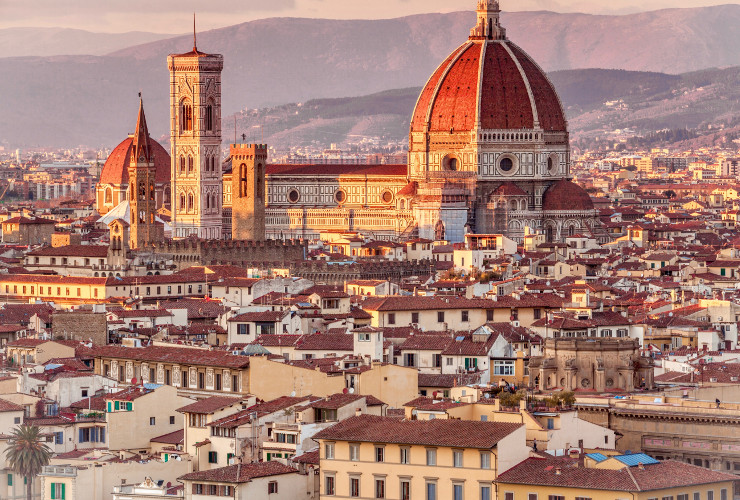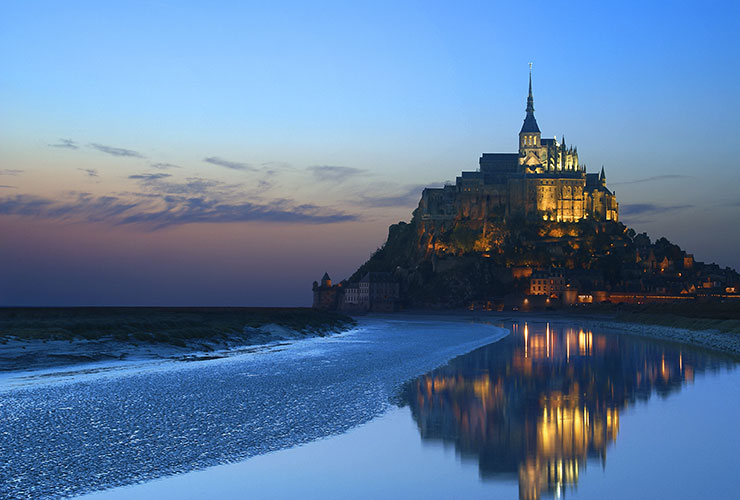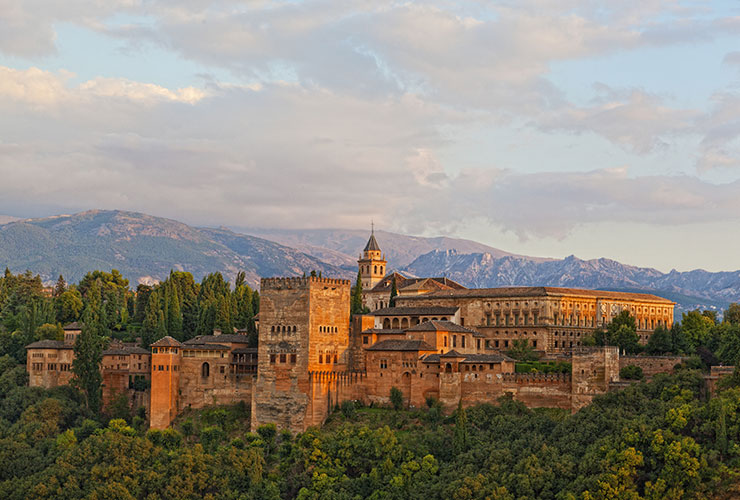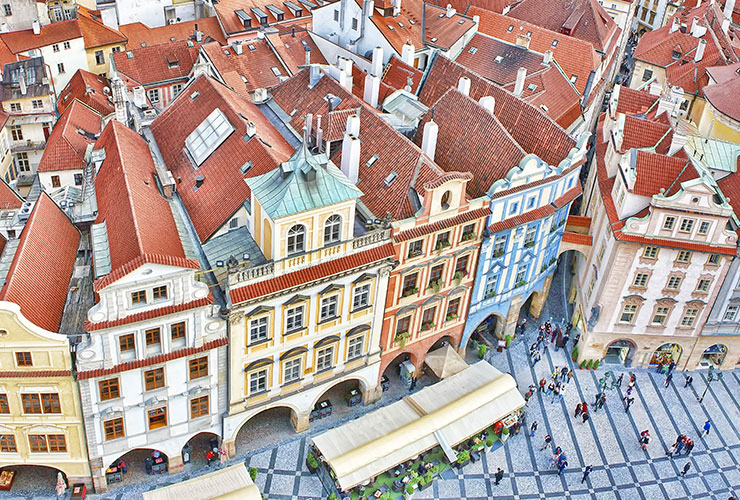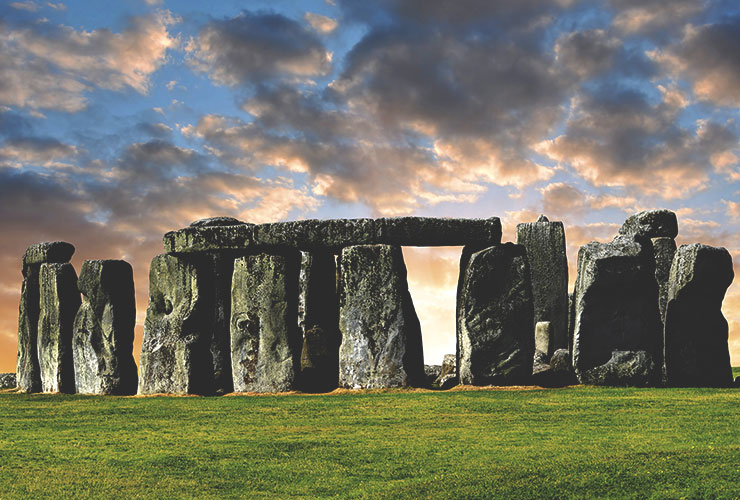Delft Experience
The historic town of Delft is one of the most beautiful and quaint places in Holland. Delft immediately brings to mind what has given rise to its worldwide fame: its blue and white pottery and the 17th century painter Jan Vermeer with his famous painting “View of Delft”, exhibited in the Mauritshuis Museum in The Hague. Vermeer’s painting allows you to perceive the urban landscape, in more delicate detail than you may observe in person, and this is the true art of this great painter. The best way to experience the special atmosphere of Delft on your trip to Holland is by strolling through the streets of its old town, observing the refinement of people, the historical monuments, the blooming linden trees and the charming canals that invite you to daydream. It is easy to understand why Jan Vermeer decided to spend his whole life here, in the city where he was born: here he found his own universe of lights, colors and everyday life, and through his work transformed the figurative arts.
The history of Delft is not much older than its period of greatest splendor, the 17th century, the one of the trips to the East Indies of the VOC (Dutch East India Company). The name Delft means “moat” and the city seems indeed to rise from the system of canals that describe its layout. The urban center grows around its oldest canal, the Oude Delft, in a form called grachten, a Dutch word indicating the particular shape of some towns in Holland (a typical example is Amsterdam), with canals developing from a central core outwards in a radial pattern. The Oude Delft canal is actually the place that more than any other tells the story of the city and that of Holland. Here you will find the Prinsenhof, a national monument, formerly a nunnery that was transformed to become the residence of William of Orange, one of the Dutch homeland fathers and leader of the independence of Holland from Spain in the 17th century.
Not to be missed is the basilica of 1400 called Nieuwe Kerk (New Church), with its working carillon from 1663 and a 108 meter high Gothic tower from where you can enjoy a magnificent view of the city. The Oude Kerk (Old Church) of the 13th century is known on the other hand for holding the tombs of Vermeer and Antoni van Leeuwenhoek, the inventor of the microscope. With the help of a darkroom and other instruments, Vermeer created his paintings deeply concerned with capturing the right kind of light and the most appropriate optical characteristics. A few blocks away, Leeuwenhoek, tried similar surveys on the principles of optical characteristics with the development of the first rudimentary microscope. The fact that the scientist was appointed executor of Vermeer’s will after his death, suggests a connection between the two, linking them by their common search for knowledge on optics.
If you are in Delft as pottery lovers then you must definitely visit the Museum Lambert Van Meerten. Delft and Chinese pottery have much in common. At the beginning of the 17th century the Dutch were familiar with porcelain imported from China and began to imitate its quality and style. Between the 17th and 19th century the city became one of the most important places for pottery production in Europe. Nowadays, the Royal Factory of Porcelain is the only one left from the many original manufacturers.
If you want to try yourself to make some pottery and create original pieces you can experience a journey through the history of Blue Delft and Royal Delft and its development and production process. You will visit the dining room of Vermeer and the Dutch Royal family Chamber; the historical courtyard and the museum with antique Delft pieces. Later you will enjoy a plate pottery workshop: you will make and decorate your own hand-painted plate, choosing a theme such as animals, sport, a classic Delft design or a zodiac sign, or creating your own personal design. Painted products are not ready to be taken home immediately as they must first be fired, but they can be shipped after approx. 10 working days to your private address.
You can listen to the most unusual tales about Delft especially in the art markets or in cafes, or while relaxing along the canals, and at that moment you may realize how you have entered into the scene of a painting yourself.
Bruges Experience
Bruges (Brugge in Flemish) is a fabulous town absolutely not to be missed during your vacation in Belgium. Its authenticity and its quaint character are enhanced by the superb preservation of houses, roads and buildings. It is a timeless town that will immerse you at times in the European Middle Ages, and at others in the Renaissance.
Bruges was once one of the cultural and commercial capitals of Europe. The town reached its maximum economic prosperity in the 13th century. Its fortune lay in the direct control over the fabrics trade in northern Europe, shared with the two rival towns of Ghent and Ypres. Bruges transformed the English high quality wool and other fabrics that were then exported all over the known world for clothing. At the time Bruges was directly connected to the sea by way of the Zwyn natural reserve estuary. Trade yielded huge profits for the town, making it a very important international center and a founding member of the Hanseatic League. Because of its prosperity, Bruges was dragged into the wars between England and France, both eager to control the rich town (besides, Bruges was in a very difficult position, being linked to England for commercial reasons, while the counts of Flanders were vassals to the King of France). The eventual decline of Bruges was, however, due to a natural occurrence. Beginning in the 16th century the Zwyn’s estuary silt up and from 1530 Bruges’ maritime traffic ceased completely. Trade and prosperity was taken over by the cities of Antwerp and Ghent, leaving Bruges to remain dormant ever since.
The heart of the medieval city is formed by the Burg and the Markt, two beautiful city squares lined by the fanciful Gothic façade of the Town Hall and the 13th century Belfort bell tower. Adjacent to the Town Hall you will find the Basilica of the Holy Blood, with its bright gold interior and paintings by the school of Van Dyck. Here is also preserved a relic of the blood of Jesus, said to have been brought directly from the Holy Land by Theodoric of Alsace in 1150.
Incredibly relaxing is the atmosphere in the peaceful garden of the Begijnhof, a structure similar to a convent where in the past wealthy widows lived a secluded life informed by prayer and small craft works, such as the manufacturing of lace. If you arrive in Bruges during the second half of August you can enjoy the Festival of Canals that is celebrated every three years. The canals are lit by candles and actors perform historical scenes of the city in real tableaux vivants. During every winter, from the third week of November to about the middle of January, you can admire the curious ice sculptures festival.
Bruges is definitely the pearl of Flanders. This Venice of the North will win you over with its romantic glimpses. Bruges is like a living museum of the 13th century, waiting only to be experienced and photographed by you.
 Hire Expertise
Hire Expertise Bespoke Itineraries
Bespoke Itineraries Travel Carefree
Travel Carefree